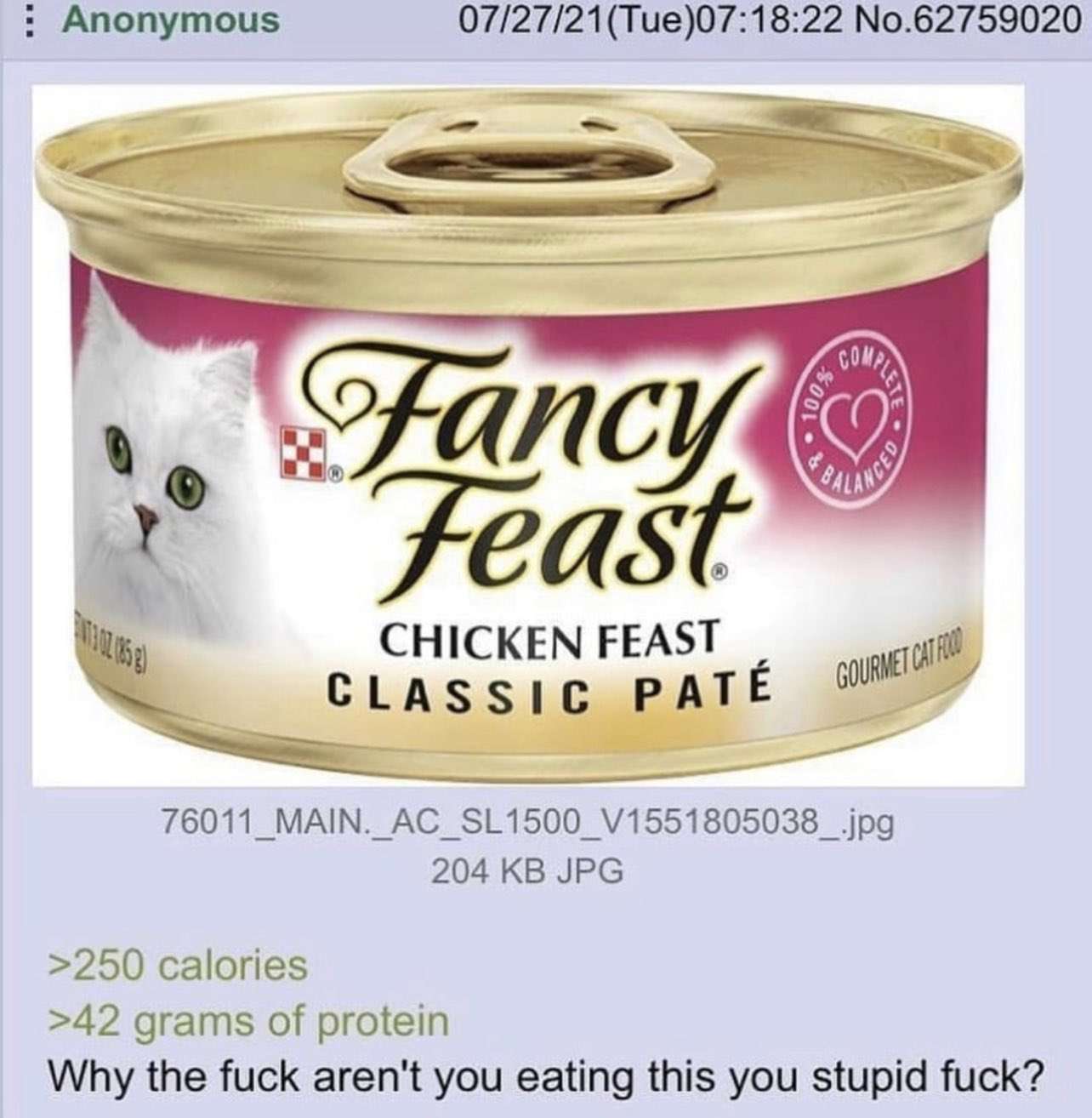this post was submitted on 12 Feb 2025
219 points (99.5% liked)
Greentext
5090 readers
706 users here now
This is a place to share greentexts and witness the confounding life of Anon. If you're new to the Greentext community, think of it as a sort of zoo with Anon as the main attraction.
Be warned:
- Anon is often crazy.
- Anon is often depressed.
- Anon frequently shares thoughts that are immature, offensive, or incomprehensible.
If you find yourself getting angry (or god forbid, agreeing) with something Anon has said, you might be doing it wrong.
founded 1 year ago
MODERATORS
you are viewing a single comment's thread
view the rest of the comments
view the rest of the comments

I couldn't find anything on the great depression requiring pet food to be safe for human consumption. I would love for someone to prove me wrong through.
According to this PetMD article, prior to WW2 pet food was a luxury item. During WW2 pet food production completely stopped due to the war. (No cited sources on this article though, I am not sure how accurate it's claims are?)
According to this Vice article, pet food is held to some standards but technically does not need to be safe for human consumption. (Again, I am not sure how trustworthy of a source Vice is)
This is the best source I have found, a peer reviewed and cited research article published on Jan 30th 2023: Insights-Driven Development of Humanized Foods for Pets. It clashes with the above article in that it talks about pet food production during WW2 and actually cites sources. In regards to pet food being required to be fit for human consumption, it doesn't mention anything about the great depression. It actually mentions that this is a more recent development and that there still isn't a "set standard"